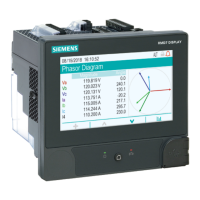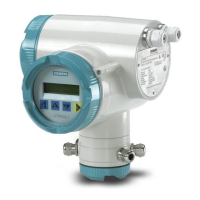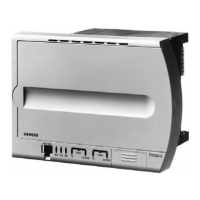Communications 9810 series - User manual
127 7EN05-0390-08
Distributed Network Protocol (DNP)
Your meter can be integrated into a DNP network as a DNP slave.
The Distributed Network Protocol Version 3.0 (DNP 3.0) is an open protocol used in the electric
utility industry for communications and interoperability among substation computers, Remote
Terminal Units (RTUs), Intelligent Electronic Devices (IEDs, for example: meters), and master
stations.
DNP supported features and default implementation
Your meter is pre-configured for basic DNP slave functionality.
Your meter supports a maximum of three concurrent connections (sessions) using the DNP 3.0
protocol; one for each serial port, up to three using Ethernet, or a combination of both.
Combinations available depend on the meter's communications options. A session consists of all
incoming and outgoing DNP master-slave traffic on one of the meter's communications ports.
For serial DNP communications, you must assign the DNP protocol to the appropriate serial
communication port on your meter; you do not have to configure your meter’s Ethernet ports.
You can modify your meter’s default DNP map using configuration software.
Data can be imported into the meter from a DNP control relay or analog output device. This is an
advanced feature intended for users with an in-depth understanding of the DNP 3.0 and ION
protocols.
See the online ION Setup help for instructions on connecting to your meter and accessing the
Setup Assistant, which can be used to modify your meter’s DNP port settings and default DNP
map.
For more information, see the Multiport DNP 3.0 and ION Technology technical note, available on
www.usa.siemens.com/pds.
DLMS/COSEM
The Device Language Message Specification (DLMS) is described by the international standard
IEC 62056. It defines structured modeling and meter data exchange for an interoperable
environment.
DLMS supports applications such as remote meter reading, remote control, and value-added
services for metering different kinds of energy, such as electricity, water, gas, or heat.
COSEM stands for Companion Specification for Energy Metering. It is an interface model for
communicating with energy metering equipment, providing a view of the functionality available
through the communications interfaces. The model uses an object-oriented approach.
The COSEM model allows for a manufacturer-independent and controlled method to identify,
retrieve, and interpret the information held in any meter.
For more information, see the DLMS/COSEM and ION technology technical note, available on
www.usa.siemens.com/pds.

